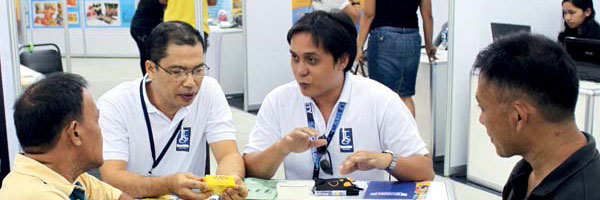How To Get A Patent On A Product
Patents
What is a patent?
A patent is an exclusive right granted for an invention, which is a product or a process that provides, in general, a new way of doing something, or offers a new technical solution to a problem. To get a patent, technical information about the invention must be disclosed to the public in a patent application.
In principle, the patent owner has the exclusive right to prevent or stop others from commercially exploiting the patented invention. In other words, patent protection means that the invention cannot be commercially made, used, distributed, imported or sold by others without the patent owner's consent.
Patents are territorial rights. In general, the exclusive rights are only applicable in the country or region in which a patent has been filed and granted, in accordance with the law of that country or region.
The protection is granted for a limited period, generally 20 years from the filing date of the application.
Patents are not just abstract concepts; they play an invaluable, practical role in everyday life. By rewarding ideas, patents encourage the development of innovations and new technologies in every field.
Patent law and treaties
The treaties WIPO administers, together with national and regional laws, make up the international legal framework for patents.
Patent-related treaties
The first major international agreement relating to the protection of industrial property rights, including patents. It outlines, in particular, national treatment, the right of priority, and a number of common rules in the field of substantive patent law. Find out more about the Paris Convention.
This treaty established an international patent filing system, making it possible to seek patent protection for an invention simultaneously in each of a large number of countries. Find out more about the PCT.
The PLT establishes common and, as a general rule, maximum requirements regarding many of the procedural formalities relating to national/regional patent applications and patents. Find out more about the PLT.
The Budapest Treaty concerns the international disclosure of biotechnological inventions. It stipulates that, for the purpose of the patent procedure, the deposit of microorganisms with an "international depository authority" must be recognized by any contracting state. Find out more about the Budapest Treaty.
Legislative and policy advice
WIPO provides extensive legislative assistance to developing countries on request, including advice in exploiting the flexibilities under international treaties in implementing their obligations.
Alternatives to Patent Search and Examination ![]()
Standing Committee (SCP)
In the Standing Committee on the Law of Patents (SCP) WIPO works with its member states and observer organizations to develop balanced international frameworks for patent law and policy. Committee members discuss, debate and decide on diverse issues related to the development of patent law to meet society's evolving needs.
Meetings and documents

Patent filing
PCT — The international patent system
The Patent and Cooperation Treaty (PCT) allows you to make a single international patent application that has the same effect as national applications filed in separate PCT states. In a nutshell, you benefit from one application, in one language paid for in one currency.
DAS and CASE — Services for patent offices
The WIPO Digital Access Service (DAS) allows priority and other similar documents to be securely exchanged among participating intellectual property offices.
The Centralized Access to Search and Examination (CASE) system enables patent offices to securely share the search and examination documentation related to patent applications, facilitating a more effective and efficient international examination process.
Patent search and analysis
PATENTSCOPE
Using PATENTSCOPE you can search through more than 43 million patent documents, including international patent applications submitted under the PCT.
Patent Register Portal
The Patent Register Portal is your gateway to online patent registers and gazettes and to legal-status-related information from over 200 jurisdictions and patent information collections.
Patent Landscapes — a technology snapshot
Patent Landscape Reports describe the patent situation for a specific technology in a given geographical area. Our reports break down and analyze key information from patent searches for easier visualization and comprehension.
IPC — Streamlining searches
The International Patent Classification (IPC) is used to classify patents and utility models according to the different areas of technology to which they relate.
Patents, technology and development
One of the main functions of the patent system is to foster technological innovation by providing an incentive for research and development. The patent system also works to diseminate technical information and promote technology transfer.
Find out more about the various ways in which WIPO engages in technology and knowledge transfer.

Inventor Assistance Program (IAP)
The Inventor Assistance Program matches developing country inventors and small businesses with limited financial means with patent attorneys, who provide pro bono legal assistance to secure patent protection.

Patent Drafting Training Program
The Patent Drafting Training Program assists users of the patent system to develop practical skills in drafting and filing patent applications.

Technology and Innovation Support Centers (TISCs)
Our Technology and Innovation Support Center (TISC) program gives innovators in developing countries access to high quality technology information and related services to help them create, protect, and manage intellectual property rights.
Related links
How To Get A Patent On A Product
Source: https://www.wipo.int/patents/en/
Posted by: whitebrociall.blogspot.com

0 Response to "How To Get A Patent On A Product"
Post a Comment